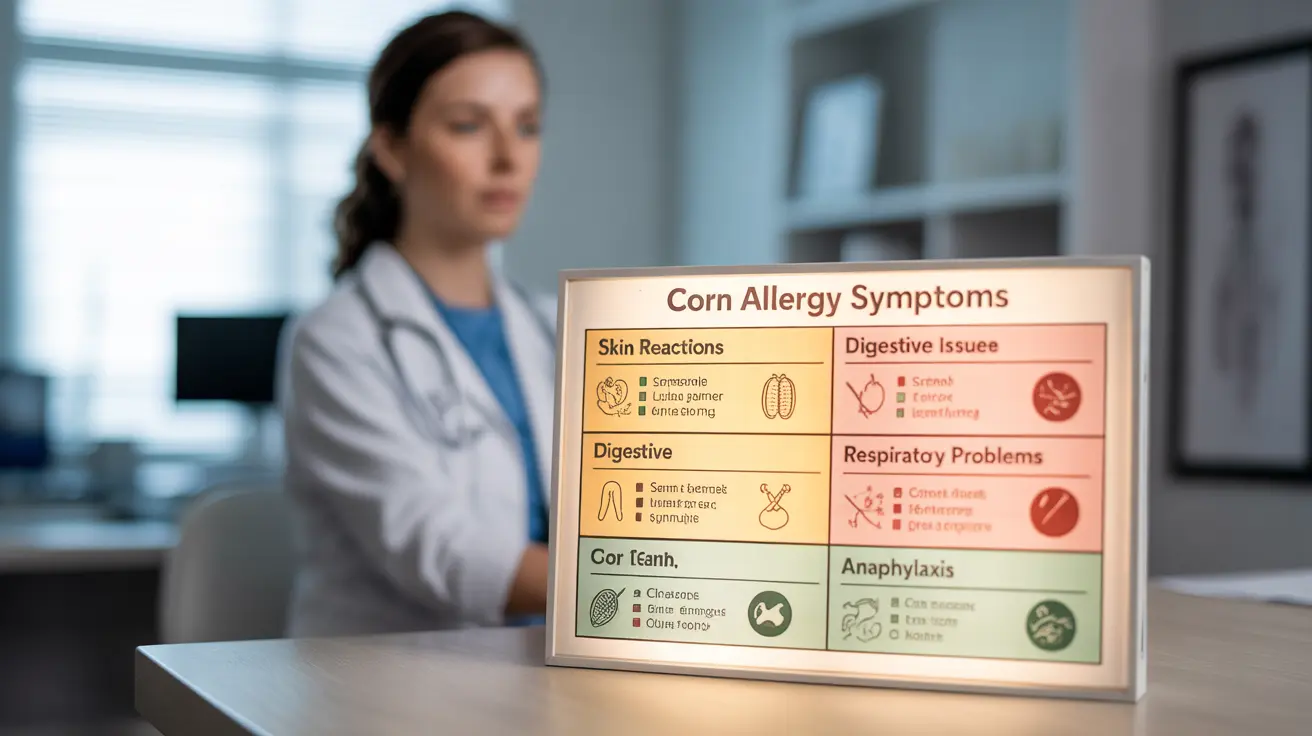Corn allergies, while less common than some other food allergies, can significantly impact daily life and require careful attention to diet and lifestyle choices. This allergic reaction occurs when the immune system mistakenly identifies proteins in corn or corn-derived products as harmful substances, triggering various symptoms that can range from mild discomfort to severe reactions.
Understanding corn allergies is crucial because corn and its derivatives are present in numerous foods, beverages, and even non-food items. This comprehensive guide will help you recognize symptoms, obtain proper diagnosis, and effectively manage this condition.
Recognizing Corn Allergy Symptoms
Corn allergy symptoms can manifest differently among individuals and may appear within minutes to several hours after exposure. Common symptoms include:
- Skin reactions (hives, rashes, or eczema)
- Digestive issues (nausea, vomiting, or diarrhea)
- Respiratory problems (wheezing, coughing, or difficulty breathing)
- Nasal congestion or runny nose
- Itching around the mouth or throat
- Headaches or fatigue
In severe cases, corn allergies can trigger anaphylaxis, a potentially life-threatening reaction requiring immediate medical attention. Signs of anaphylaxis include severe difficulty breathing, rapid pulse, drop in blood pressure, and loss of consciousness.
Diagnosis and Testing Methods
Proper diagnosis of a corn allergy typically involves several steps and medical procedures:
Medical History Review
Your healthcare provider will carefully examine your medical history and discuss any previous allergic reactions you've experienced.
Allergy Testing Options
- Skin prick tests
- Blood tests (specific IgE testing)
- Oral food challenges (under medical supervision)
- Food elimination diets
Hidden Sources of Corn
Corn and its derivatives appear in many unexpected products. Common items to watch for include:
Food Sources
- Corn syrup and high fructose corn syrup
- Modified corn starch
- Corn oil
- Cornmeal and corn flour
- Dextrose and maltodextrin
Non-Food Sources
- Some medications and supplements
- Adhesives and packaging materials
- Personal care products
- Some types of clothing fabric sizing
Managing Corn Allergies
Effective management of corn allergies involves several key strategies:
Prevention Strategies
- Reading food labels carefully
- Preparing meals at home
- Carrying emergency medication
- Wearing medical alert jewelry
- Informing restaurants and food handlers about your allergy
Treatment Approaches
Treatment options vary depending on the severity of symptoms and may include:
- Antihistamines for mild reactions
- Emergency epinephrine for severe reactions
- Topical treatments for skin symptoms
- Alternative dietary choices and substitutions
Frequently Asked Questions
What are the common symptoms of a corn allergy and how quickly do they appear after exposure?
Corn allergy symptoms typically appear within minutes to a few hours after exposure. Common symptoms include hives, digestive issues, respiratory problems, and in severe cases, anaphylaxis. The onset time varies among individuals and can depend on the form of corn consumed and individual sensitivity.
How is a corn allergy diagnosed and what tests are used to confirm it?
Corn allergies are diagnosed through a combination of medical history review, skin prick tests, specific IgE blood tests, and sometimes oral food challenges. Your allergist may also recommend an elimination diet to confirm the diagnosis.
What foods and products should I avoid if I have a corn allergy?
People with corn allergies should avoid obvious corn products and be vigilant about hidden sources in processed foods, beverages, and non-food items. This includes corn syrup, corn starch, corn oil, and various corn derivatives commonly used in food processing and manufacturing.
What treatments are available for managing mild and severe corn allergy reactions?
Mild reactions can be managed with antihistamines, while severe reactions require immediate epinephrine administration. Long-term management involves strict avoidance of corn and corn-derived products, along with having an emergency action plan in place.
How can I prepare for and respond to a severe allergic reaction like anaphylaxis caused by corn?
Prepare by carrying prescribed emergency medications (such as an epinephrine auto-injector) at all times, wearing medical alert jewelry, and having a written emergency action plan. In case of anaphylaxis, use your epinephrine auto-injector immediately and call emergency services.




